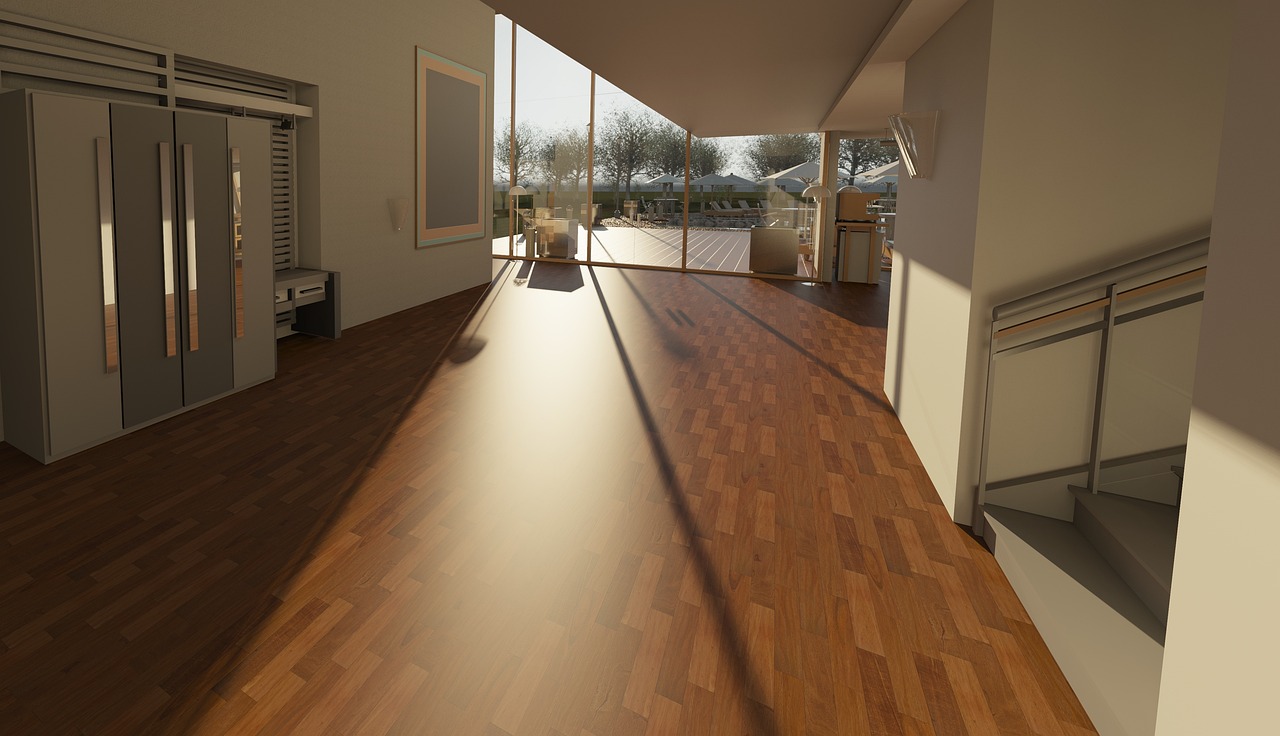Choosing the right flooring for every part of the home can be more exciting than it seems. Think of it as the foundation that connects all the spaces, reflecting both the style of the house and your daily needs. Let’s explore the most suitable options for each area, with details that truly make a difference.
Flooring for High-Traffic Areas
Areas such as hallways, living rooms, and entrances are hubs of constant movement. For these spaces, porcelain tiles are a popular choice: durable, resilient, and available in a wide variety of styles, from polished finishes that reflect light to more natural textures. However, they can be a bit heavy on the budget. For a modern, minimalist look, polished concrete is a robust and more affordable alternative. If your priority is saving money without compromising durability, ceramic tiles are a safe and practical option.
In terms of acoustics, hard floors like porcelain and polished concrete can amplify noise. This can be mitigated with rugs or felt pads under furniture. Sustainability gives polished concrete an edge, as its production requires fewer resources.
When it comes to colours, neutral tones like grey and beige help visually expand the space and harmonise with different interior styles. For a bold choice, black or graphite exudes sophistication, though they require frequent upkeep. Larger tiles create a cleaner look, while geometric patterns, like hexagonal tiles, add a contemporary touch.
Cleaning starts with a good sweep or vacuum to remove dust. For porcelain tiles, use a damp cloth with diluted neutral detergent, avoiding abrasive products. Polished concrete benefits from neutral soap and a soft cloth to prevent water stains. Ceramic tiles have a simple and effective cleaning routine with these same products.
Flooring Options for Wet Areas
Kitchens, bathrooms, and utility rooms require waterproof and easy-to-clean floors. Porcelain tiles remain a favourite: resistant to water, stains, and impacts. For a more affordable option, ceramic tiles are practical and reliable. Vinyl flooring is another interesting choice – it’s water-resistant and more comfortable underfoot, making it ideal for kitchens.
Sustainability finds an ally in encaustic tiles, which are handcrafted and highly durable. For colours, light tones like sand and white make small spaces feel larger and convey cleanliness. Grey or beige marble-effect tiles add sophistication, while patterned tiles bring a retro charm. Mosaics and rectangular tiles are perfect for creating attractive details without overdoing it.
For porcelain and ceramic tiles, use warm water and neutral detergent. Grimy grout can be cleaned with a mix of bicarbonate of soda and a soft brush. Vinyl flooring requires non-abrasive products and a wrung-out mop to avoid excess moisture. Avoid harsh scrubbers that could damage the finish.

Comfortable Flooring for Bedrooms and Living Rooms
Spaces designed for relaxation call for materials that bring warmth and comfort. Laminate and vinyl flooring are popular choices, offering a cosy feel with easy installation and maintenance. Solid wood is perfect for those seeking elegance and sophistication, though it requires a higher investment and regular care. Another trend making a comeback is modular carpets, which provide excellent acoustic insulation and are ideal for colder rooms.
Acoustics are a strong point of softer flooring, such as carpets and vinyl, which help absorb sound and create a quieter atmosphere. In terms of colours, light woods like oak brighten rooms, while darker shades like ebony or walnut add a touch of sophistication. Opting for unique patterns, like herringbone or chevron, is a creative way to enhance the space.
Laminate and vinyl flooring only require a damp cloth with neutral detergent – avoid excess water. Solid wood needs specialised products to prevent damage to its finish. Carpets require regular vacuuming and occasional dry cleaning to maintain their appearance and hygiene.
Carpets: Where and When to Use Them
Carpets remain a relevant option for those seeking thermal and acoustic comfort. They are particularly suited for:
- Bedrooms: Provide cosiness and keep the cold at bay, making the room more inviting.
- Living rooms or home offices: Reduce noise and offer a comfortable surface to sit or lie on.
- Children’s spaces: Cushion falls and create a safe surface for play.
Advantages: - Thermal and acoustic comfort.
- A wide range of colours, textures, and patterns.
- Easy to install in modular formats.
Disadvantages: - Accumulate dust and allergens, requiring more frequent cleaning.
- May be less durable in high-traffic areas.
Regular vacuuming is essential to remove dust and dirt. Dry or steam cleaning helps maintain the carpet in good condition, especially in high-traffic areas. Use anti-dust mite products if needed, particularly in homes with children or pets.
Choosing the right flooring is a crucial part of creating a functional and aesthetically pleasing home. Durability and practicality for high-traffic areas, water resistance for wet spaces, and cosiness for restful rooms. Each material, colour, and texture plays an important role in the home’s harmony – including aspects like sustainability and acoustic comfort. Now that you know the details, which flooring best suits your home’s style?

